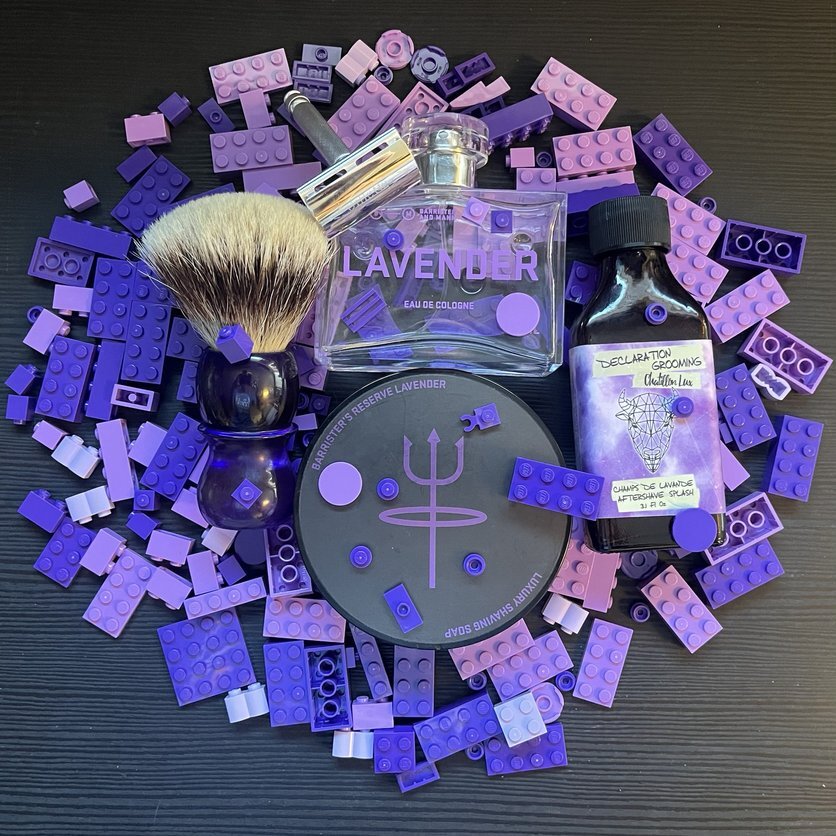Some razors are all edge and no point. Ferdinando Pasquale Musso’s cylindrical safety razor is arguable one of them. Even if Mr Musso did have a point with his invention. In the words of the patent;
A razor of this type has the advantage that it will produce a a fast clean shave whether the beard is long or short, and can be moved over the face in any direction with equal effectiveness.
In other words, the point of the invention was a unidirectional razor. And since the razor featured a circular blade with an internal edge, it does in fact matter little what direction the user pushes the cylindrical safety razor. It cuts just as well going any way.
A unique aspect to Mr Musso’s safety razor was that it was meant to be used either manually, or to be motor driven. Although given the large opening and sheer amount of exposed edge, I think I would prefer to use it by hand.
The heart of Mr Musso’s cylindrical safety razor is the frusto-conical shaver blade with a circular opening. Or in layman’s terms, a blade that is made from a cone with the top chopped of. The opening is sharpened to provide a cutting edge.
The frusto-conical blade is mounted on the razor proper. This is basically a hollowed out cylinder. A collar is threaded onto the main body of the razor, holding the blade in position. This collar can be considered the analogue of the top cap on a regular three piece razor.
In the middle of the hollowed out cylinder that makes up the main body of the cylindrical safety razor is a mushroom shaped protrusion. This functions as the guard of a regular razor. It would prevent the skin of the shavers face from disappearing into the middle of the blade. The guard mushroom would be kept in place by a small thumb screw.
Patent drawing from US patent 2,598,711
If you look at the parts making up the razor, Mr Musso’s cylindrical safety razor was quite simple. Just four bits – the blade, the cylindrical body, the collar, the mushroom, and a thumb screw. All of which would be easy to machine in quantity.
As for downsides, I can see a few.
For starters, the cylindrical safety razor requires a special blade. Making a razor that requires a unique blade isn’t easy, even less so when most of the marked was covered by the ubiquitous double edge blade. Breaking into the marked is always hard to do.
Secondly, it’s tiny. While this makes for a good travel razor, it also means it will be tricky to shave with. The lack of a handle is both a pro and a con. On one hand it makes areas like under the nose easier to do. On the other hand, it means the shaver have to to keep holding the little cylinder between three fingers the whole time.
And thirdly, the little hollowed out cylinder would fill up with lather and beard hair in no time. It would need to be rinsed out frequently, and throughoutly.
I’m sure Mr Musso’s cylindrical safety razor would work as intended. I’m just not sure it would be any better – or even as good – as a regular three piece razor.
You can read the whole patent for the cylindrical safety razor over at Google Patents.
Biggest issue is probably manufacturing difficulty and the biomechanics of pushing a razor being less stable/precise than pulling, making much of the razor less likely to be used and likely to provide a worse shave.
Doesnt the razor slices the skin when pulled sideways? In a circle blade this will happen pretty often. Whenever one doesnt push it perfectly straight. Imagine pushing it in circles. I guess you couldnt do a single shave without loads of cuts…
But maybe i didnt understand the concept.
Or perhaps you understand it well enough.
I suspect that if you keep the angle tight, it’ll limit skin contact from the non-cutting parts of the blade.


